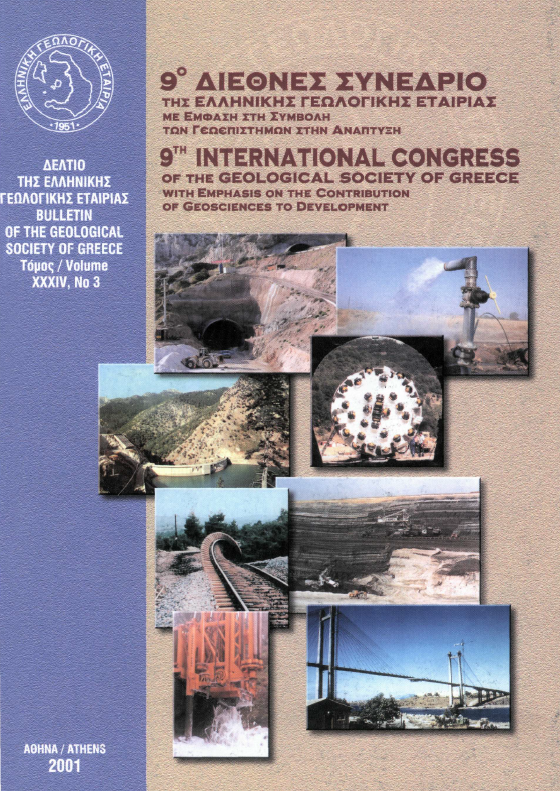The mineralogy and geochemistry of zeolite-bearing volcanics from Acrotiri (Santorini island) and Polyegos (Milos group of islands), Greece. Implications for geochemical classification diagrams
Περίληψη
Almost 100 samples of volcanic rocks from Akrotiri (Santorini Island) and Polyegos (Milos group of Islands) were studied. Clinoptilolite and mordenite dominate the mineralogy in Akrotiri and Polyegos respectively. In Akrotiri, an acidic mainly precursor, probably a rhyodacite-dacite type of rock, was the parent precursor, although some samples indicate a more basic one. In Polyegos, it seems that a trachyandesite/rhyodacite type of rock has acted as precursor. However, this could be due to the possible depletion of Y under hydrothermal alteration, the increase of the Nb/Y ratio, and the shift (in the (Nb/Y vs. Zr/Ti02 diagram) of the nature of the precursor towards a more alkaline character. Thus, the true nature of the unaltered fresh precursor could actually be closer to the rhyodacite-dacite type of rock field. Geochemical classification diagrams using Si02, Na20 and K20 are not suitable for use with such materials. Diagrams using less mobile elements, such as Zr, Ti, Nb and Y are much more reliable, but with hydrothermal alteration conditions, their usefulness is variably restricted, and they should also be used with caution.
Λεπτομέρειες άρθρου
- Πώς να δημιουργήσετε Αναφορές
-
KITSOPOULOS, K. P., SCOTT, P. W., JEFFREY, C. A., & MARSH, N. G. (2001). The mineralogy and geochemistry of zeolite-bearing volcanics from Acrotiri (Santorini island) and Polyegos (Milos group of islands), Greece. Implications for geochemical classification diagrams. Δελτίο της Ελληνικής Γεωλογικής Εταιρείας, 34(3), 859–865. https://doi.org/10.12681/bgsg.17100
- Ενότητα
- Ορυκτολογία και Κρυσταλλογραφία

Αυτή η εργασία είναι αδειοδοτημένη υπό το CC Αναφορά Δημιουργού – Μη Εμπορική Χρήση 4.0.
Οι συγγραφείς θα πρέπει να είναι σύμφωνοι με τα παρακάτω: Οι συγγραφείς των άρθρων που δημοσιεύονται στο περιοδικό διατηρούν τα δικαιώματα πνευματικής ιδιοκτησίας επί των άρθρων τους, δίνοντας στο περιοδικό το δικαίωμα της πρώτης δημοσίευσης. Άρθρα που δημοσιεύονται στο περιοδικό διατίθενται με άδεια Creative Commons 4.0 Non Commercial και σύμφωνα με την οποία μπορούν να χρησιμοποιούνται ελεύθερα, με αναφορά στο/στη συγγραφέα και στην πρώτη δημοσίευση για μη κερδοσκοπικούς σκοπούς. Οι συγγραφείς μπορούν να: Μοιραστούν — αντιγράψουν και αναδιανέμουν το υλικό με κάθε μέσο και τρόπο, Προσαρμόσουν — αναμείξουν, τροποποιήσουν και δημιουργήσουν πάνω στο υλικό.



